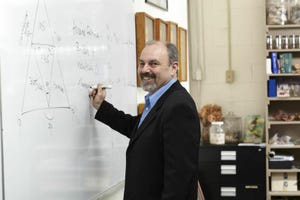August 31, 2014

Great systems including traditional Chinese medicine, Ayureveda in India, Siddha in Sri Lanka, Kampo in Japan and Tibetan medicine, are several hundreds or even thousands of yeard old.  Over time, they have been refined, tested, and utilized, becoming even more effective tools to help people maintain health and treat illness.
Over time, they have been refined, tested, and utilized, becoming even more effective tools to help people maintain health and treat illness.
In the U.S., the Eclectic physicians and the Physiomedicalists created highly effective systems of herbal medicine. But these practitioners, along with their methods, died out by the early 20th century, leaving the nation with a patchwork of herbal knowledge that’s very allopathic in practice. In other words, the idea that “this herb is good for that disease” took over, although that is not how herbal medicine actually works. Herbal medicine is the oldest form of medicine in the world.
These misconceptions led to the types of claims we see and hear today: “Saw palmetto is the prostate herb” or “St. John’s wort is the depression herb.” These sound bites do a disservice to specific herbs and to the people using them because they are simply not true. St. John’s wort, for example, is effective for only three out of 15 different types of depression. But the real problem is that, while certain herbs have become popular, herbal medicine has not, so it remains largely misunderstood. Case in point: Using St. John’s wort instead of Zoloft for depression is not herbal medicine—it’s an allopathic use of herbs. Most people who use a single herb to treat a multifaceted problem, such as depression, will be underwhelmed with the results.
Traditional systems of medicine almost always use herbs in combination formulas rather than singularly. Practitioners treat complex people with complex problems, and in most cases, it’s unlikely that a single herb will be highly effective. For instance, in a formula that targets benign prostatic hyperplasia, saw palmetto has some activity, but its effects are quite modest. But if we combine saw palmetto with nettle root, which has similar activity but works through different mechanisms, we get an additive effect. Then if we add white sage, one of only three herbs I’m aware of that will actually shrink a swollen prostate, along with collinsonia, which was used by the Eclectics for boggy atonic tissue (which describes a swollen prostate to a T), we create a synergy of action that gets superior results.
Still, this is a very different process from just taking herb A, B and C and throwing them together, because that approach often doesn’t work. Some formulators will look at the research and say, “Herb A was studied as an individual herb and was effective for treating a certain medical problem. Herb B was also studied as an individual herb and was useful for the same condition. So was herb C. Since they all had activity, let’s throw them together.” But in traditional systems of medicine, just as herbalists have figured out that specific herbs work very well together, they’ve also determined that others don’t. The skillful combining of herbs to get a synergistic effect means that, instead of one and one equaling two, one and one equals three. The concept of synergy has always been a part of traditional herbal medicine, but only in the last 10 years has there been research to show that synergy actually can and does occur.
In clinical practice, we often use specific herbs in combination for people with a certain condition over and over again, and they work very well. This also gives us a basis for a formula that will work for the majority of people with whatever condition we are trying to deal with. This is why formulas developed by trained clinical herbalists often work best.
Good herbal medicine treats people, not diseases. This makes herbalism very difficult for retailers. Most customers come in with a health issue, let’s say a migraine, and they think, “Oh, I want feverfew.” But feverfew works for some migraines (vaso-dilative) but not for other types (vaso-constrictive). We need to educate people on how to differentiate the underlying causes, patterns and issues that lead to headaches—or hypertension, PMS or any number of health concerns. Of course, this is not something every retailer is able to do. But a surprising number take my herbal courses and join my online salons, which help them to understand how to look beyond the illness and see the person who has it.
Herbalists want to give people a good experience with herbs. Otherwise, if they take something and it doesn’t give them the results they expect, they think, “I tried herbs; they don’t work.” Becoming educated about effective herb use so you can pass that knowledge on to your customers will result in maximum benefit for all.
David Winston is a registered herbalist with the American Herbalists Guild and founder of Herbalist & Alchemist.
About the Author(s)
You May Also Like
.png?width=700&auto=webp&quality=80&disable=upscale)




